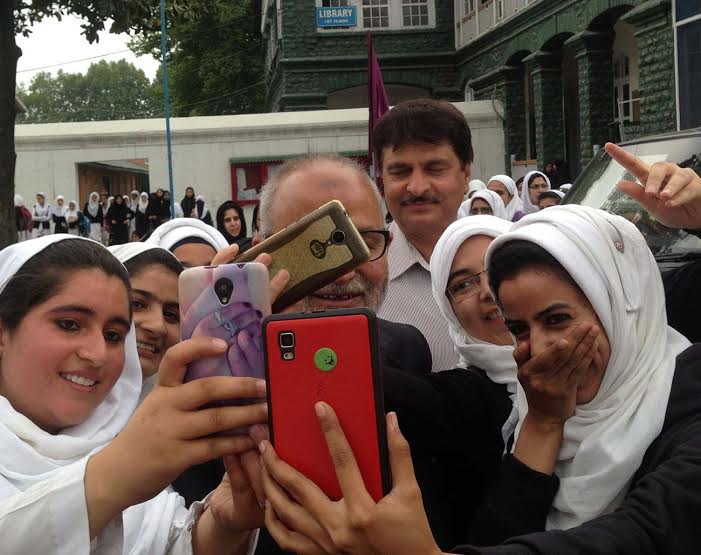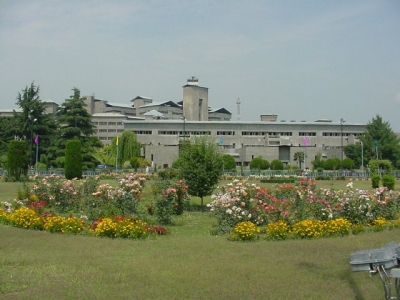by Dr Khurshid Ahmad Tariq
Life is witnessing a continuous transition, so does the means and modes of communication. Technology has revived our life and has changed the rules of our social animal status. Social media has emerged as an ideal platform to disseminate tons and tons of valid information and knowledge besides communicating or building a better relationship between colleagues, teachers, and students.
 It has given rise to a newly emerging field in academia called as academic social networking. It can be an effective tool and an important component of academia to discover and share ideas based on teaching and research. In fact, social media is being put to good uses by academicians and institutions of the world for teaching-learning processes and knowledge dissemination.
It has given rise to a newly emerging field in academia called as academic social networking. It can be an effective tool and an important component of academia to discover and share ideas based on teaching and research. In fact, social media is being put to good uses by academicians and institutions of the world for teaching-learning processes and knowledge dissemination.
The social networking is a boon, provided we learn to make the best use of it as a means of making beneficial contacts, communicating, disseminating knowledge, learning and gaining knowledge. However, it is equally challenging to use as there is also a bad side to this technology and has proved as a source of distraction to divert the attention of students from academia. One school of thought advocates that social media is an efficient platform for knowledge dissemination while another school of thought lay stress on the distraction properties of social media. Well, both opinions can be true but ultimately we have to believe that nothing is good or bad but thinking makes it so. Similarly, it is the pure usage that decides whether social media is a bane or boon for academic life. Simply we need a guide and code of conduct to manage our online presence and how to use social media.
Different nations of the world also differ in the usage of these social networking sites and have devised the strict rules and guidelines on how to use them. For example, China, who is progressing so well in education and governance has completely banned some of the top line social media otherwise used worldwide but actually has its own social media platform to maintain its cultural integrity. The websites and social apps blocked in mainland China are: Google, Facebook, Whatsapp, Twitter, YouTube, Gmail and Instagram due to China’s internet censorship thanks to the development of second wall The Great Firewall web filter after the first successful “Great Wall of China” as a safeguard and protective measure.
I am not advocating that social media is indispensable and we can’t progress and learn without it. My concern is to discuss how to put social media to good and beneficial use in the field of education.
In this write-up, I will restrict myself to the only the positive side of social media for better educational gains and institutional growth. There are surely questions in the minds of common people, why to make use of social media. Indeed man is a social animal and the social media has revived this human trait. The present is the age of computers dominating almost every sphere of life and world is open to us. Almost every one amongst us owns a Smartphone or a computer or some related device. The recent technological breakthroughs have resulted in many social networking sites like Facebook, Twitter, Skype, LinkedIn, etc. They enable us to connect and share with each other. Therefore, technology has strengthened, broadened, redefined and revived our social animal status with too many positive aspects. Social media has increased the diversity of academic delivery channels for collaborative learning and communication.

I believe that academic institutions should make ways and set up procedures of using social media for better academic learning and to disseminate the research findings. However, opinions differ and my generalization can’t be binding to all.
Indeed social media has a positive impact on our lives in particular and society in general. There is no doubt that teachers are a role model and have a multi-dimensional role to play in imparting quality education and life-enhancing skills to the students which are the hallmark of today’s education. Therefore, teachers can make the best use of social media in imparting and ensuring skill based on creative and innovative learning. Social media can prove as the best platform for the teachers in enriching the students with the timely knowledge, imparting skill-based education, enlightening the students critical thinking, inculcating moral principles and development of scholarly capabilities. In my opinion, students should use the social media more frequently for learning purposes and gaining academic excellence rather than merely killing time watching junk on social media.
Recently I attended a webinar on “social media for researchers” sponsored by online Elsevier researcher academy. I realized how significant the social media is for imparting and sharing knowledge, and it is not only about sharing photos, videos, and bad stuff. In academia, using social media can mean to gain institutional and personal reputation by sharing novel findings, exchanging scientific ideas, disseminating learning modules and materials. Having a niche in Facebook, Twitter and LinkedIn is inevitable and is quick and dynamic means of communicating with the wider public for social betterment.

Specialised online communities have emerged within the domain of social media with a focus on academic collaborations and knowledge sharing. These communities include tools like Web 2.0, Mendeley, Google Scholar, Research gate, Loop, Academia.edu, etc. especially designed for academics to share and view the latest developments in academic research. These platforms have achieved much of the popularity and significance in the academic research and professional development. One can say they have become indispensable tools and the online repository of the academic community. They enable us to participate in relevant online training courses and e-learning modules. They have solved the long pending problem of academic collaborations which is now easily done through these platforms. They have played a pivotal role in international academic research and cooperation besides the tools of managing the one’s personal online presence, to promote knowledge and to propagate research findings. These communities provide various e-learning resources to support teachers and researchers at every step, to gain up-to-date and innovative knowledge, promoting academic skills and research findings for maximum impact and social benefits.
Conclusion: The social media has emerged as an effective tool for transforming the education and benefits of using the social media are multiple. But it is equally important to know how to use each type of social platform with the utmost care and safety. Simply we have to learn “share with care”. The social networking is equally important for researchers, teachers, students, and administrators. Using social media as a learning platform for students besides the boundary walls of an institution has achieved much of the importance in the present world.
Shams Irfan edited the copy
(The writer works as an assistant professor in the Department of Zoology at the Islamia College of Science and Commerce, Srinagar. The views expressed are his own.)















